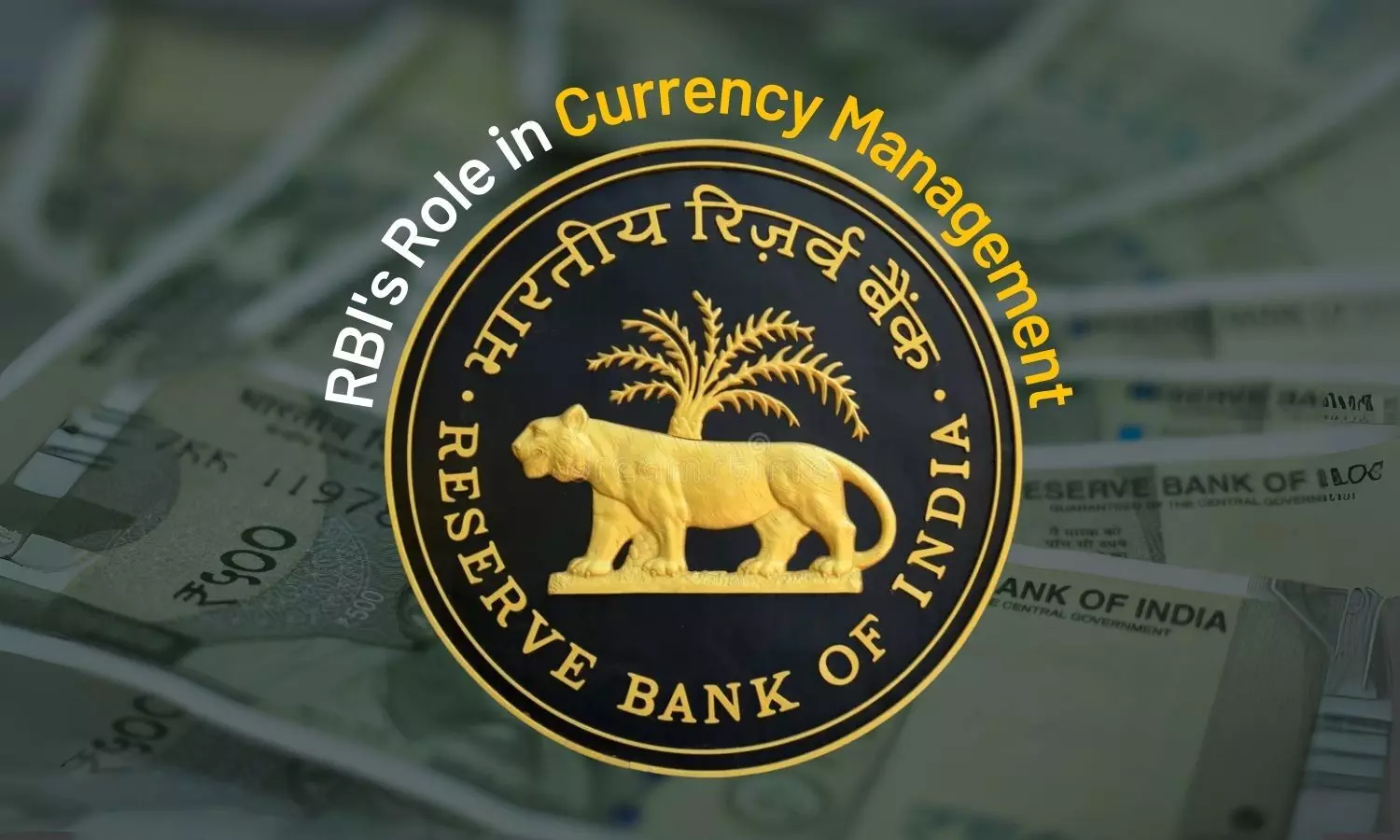A comprehensive guide on RBI's Role in Currency Management
Learn about the currency management system in India, its significance, key developments and why it's important for the economy.
A comprehensive guide on RBI's Role in Currency Management

The Reserve Bank of India (RBI) leads the currency management system in India. Let's understand how it does. The Department of Currency Management (DCM), a core department of the RBI, administers currency management functions. There are multiple cells under the DCM that perform tasks related to currency management. The ultimate goal behind currency management is to provide monetary stability and economic growth.
Currency management functions primarily involve issuance of notes and coins and retrieving unfit currency, but that’s not all. Managing currency is not a complex task which encompasses a wide range of functions, regulations, validations, etc.
The RBI collaborates with mints to produce banknotes and coins. The Security Printing and Minting Corporation of India (SPMCIL) is a government-owned company that prints notes and coins. The SPMCIL has four mints in Mumbai, Kolkata, Hyderabad, and Noida. The Bharatiya Reserve Bank Note Mudran Private Limited (BRBNMPL), a subsidiary of the RBI, is another printing agency. It has two printing presses located in Karnataka and West Bengal.
There are a number of functions involved in currency management, but the following are the primary:
- Currency issuance: The DCM is responsible for issuing and supplying currency in the economy. The RBI's currency design and security features are considered for the printing of banknotes and coins. The currency management department oversees the design and quality and ensures security and quality control measures.
- Currency circulation management: The DCM forecasts demand for notes and coins,and adjusts the supply of currency to meet demand. It also takes into account seasonal factors like festivals, and large-scale economic activities to predict the currency demand and controls the supply. Regulating cash flow is an important part of the RBI’s currency management division.
- Cash management by RBI: Cash management is a crucial function of the currency management system. In association with commercial banks, the RBI calibrates the availability of cash in bank branches and ATMs. It also adjusts the cash reserve ratio (CRR) ratio for banks to counter unexpected surges in demand. The end goal of cash management is to keep maximum liquidity in the system and reduce the cost of funds.
- Inclusion of currency policies: The RBI’s currency policies are pivotal to currency management and it aims to streamline the process of how currency is issued, circulated, or regulated in the economy. It introduces guidelines about the printing and withdrawal of notes, and currency exchange policy among various other measures to maintain the integrity of the national currency.
- Counterfeit currency control: One of the primary tasks of the RBI is to prevent counterfeiting of money. As this could lead to a serious risk to the economy. For example, it can increase the money supply, evoke inflation and destabilise the economy. For this, the RBI follows the highest standards of security and advanced technologies to prevent counterfeiting. This includes prompt reporting, staff training and surprise checks.
- Currency exchange policies:The RBI’s role also includes setting up currency exchange policies including comprehensive guidelines on handling and replacing denominations as well as broad based economic shifts such as demonetisation. Banks are allowed to facilitate the exchange of currency while adhering to RBI norms. During the time of demonetization in 2016, the RBI released instructions to ensure that the exchange of old notes can happen seamlessly and efficiently.
- Integrity of banknotes: Maintaining the integrity of banknotes is a crucial task for the RBI. In this method, the RBI implements a combination of security features and internal policies to protect the currency from fraud and prolong its life cycle.
- Spreading public awareness: The RBI issues information on currency-related matters for the general public to spread knowledge and awareness on such as new security features, how to identify counterfeit notes, updates on banknote design, and changes in currency policies.
Significant Developments in Currency Management
The RBI plays a pivotal role in currency management. The RBI's role in demonetization stands as a testament to its excellency in this domain. Over the years, the currency policy has changed and so has the denominations. It is interesting to note that there used to be high-value denominations of Rs. 5000 and Rs. 10,000 in the past. However, the Indian government ordered a ban on these denominations in 1978. The goal behind this was to stop financial malpractices and illegal activities.
Fast forward to 2016, the Indian government announced demonetisation of Rs. 500 and Rs.1,000 overnight. This action was taken to curb the circulation of black money in the economy. In both of these cases, the RBI had an important role in recalling the unfit notes and reissuing currency. More recently, the Rs. 2000 banknotes were taken out of circulation. The implementation of such revolutionary changes was solely led by the RBI.
The role of the RBI in currency management is essential to the smooth functioning of the economy. A stable currency encourages economic growth and enhances people's confidence. The RBI ensures that the currency system remains stable, safe, and responsive to the needs of the people. The RBI's role in demonetization brings to the light of its excellence in handling currency management.

